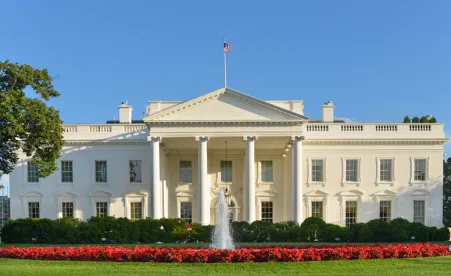On January 30, US President Donald Trump issued his Executive Order on Reducing Regulation and Controlling Regulatory Costs (EO). The declared purpose of the EO is to manage costs associated with governmental imposition of private expenditures required to comply with federal regulations. To that end, the EO provides that any new incremental costs associated with new regulations, to the extent permitted by law, are to be offset by the elimination of the costs associated with at least two existing regulations (i.e., a “one-for-two” rule with respect to new regulations).
On its face, the EO is expansive in coverage, which has raised questions about the ability of taxpayers to rely on regulations of the US Department of the Treasury issued in proposed form on January 20, 2017—even those that are insignificant and/or noncontroversial.
The Executive Order authorizes the Director of the Office of Management and Budget (OMB) to provide guidance on the EO’s directive, and interim guidance was issued on February 2 by the Acting Administrator, Office of Information and Regulatory Affairs (a part of the OMB). The interim guidance provides clarification as to the general requirement of the EO with respect to coverage as well as how to measure the cost of regulations for purposes of the EO.
This guidance provides that the “one-for-two” requirement applies to “significant regulatory actions” issued between noon on January 20, 2017 and September 30, 2017, which includes significant final regulations for which agencies issued a Notice of Proposed Rulemaking before noon on January 20, 2017. For this purpose, the interim guidance clarifies that a “significant regulatory action” has the meaning set forth in Executive Order 12866 (issued by President Bill Clinton in 1993), i.e., any regulatory action that is likely to result in a rule that may do the following:
-
Have an annual effect on the economy of $100 million or more or adversely affect in a material way the economy, a sector of the economy, productivity, competition, jobs, the environment, public health or safety, or State, local, or tribal governments or communities;
-
Create a serious inconsistency or otherwise interfere with an action taken or planned by another agency;
-
Materially alter the budgetary impact of entitlements, grants, user fees, or loan programs or the rights and obligations of recipients thereof; or
-
Raise novel legal or policy issues arising out of legal mandates, the President's priorities, or the principles set forth in this Executive order.
In general, few tax regulations would be considered “significant regulatory actions” under the criteria above. Accordingly, absent a characterization of a proposed tax regulation issued before January 20, 2017 as significant, taxpayers should be able to continue to rely upon the regulation in accordance with its terms.



 />i
/>i
